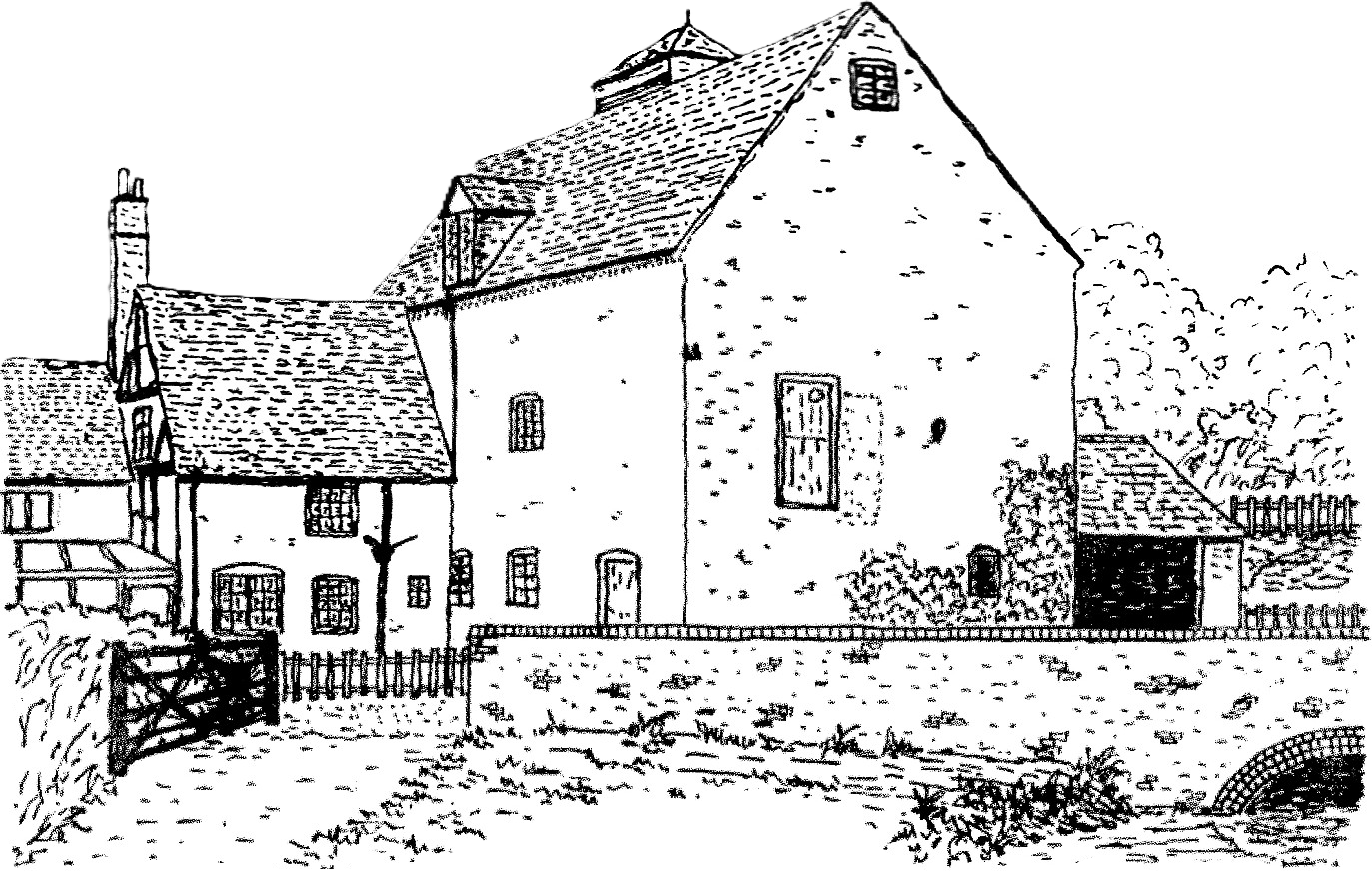The Quern
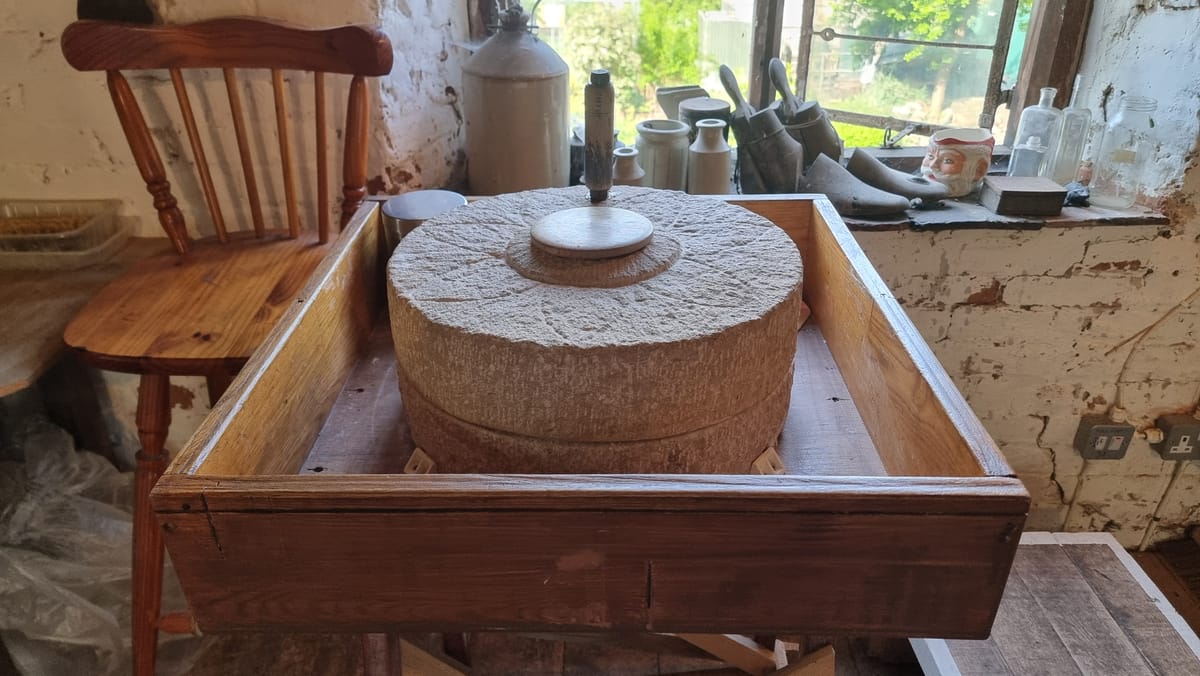
Above you can see our quern at New Hall Mill. We invite visitors of all ages to try using this on Open Days - it's a great way to get some hands-on milling experience. It is especially useful on those (thankfully) very rare occasions when the waterwheel is out of action.
Saddle querns
Before watermills existed, early Neolithic farming communities typically turned grain into flour by grinding it between two rough stones – these saddle stones consisted of a flat or dish-shaped hollowed out bedstone – the saddle quern, and a smaller, hand-held stone which was rubbed back and forth – the muller, rubber, or handstone. In Britain the saddle quern reached Britain around 4000BC and remained the main grinding method for many centuries.
Rotary querns
Around the Middle Iron Age (c. 400 BC) a new design appeared: the rotary quern, probably from Spain. Mechanically, they were the same type as ours. They had two circular stones (an upper runner and a lower bed stone) and usually a handle. Grain was fed through a hole (or eye) in the top stone and ground between the stones as the top runner stone rotated. Iron age querns often had a distinctive domed runner stone, so archaeologists often call these beehive querns.
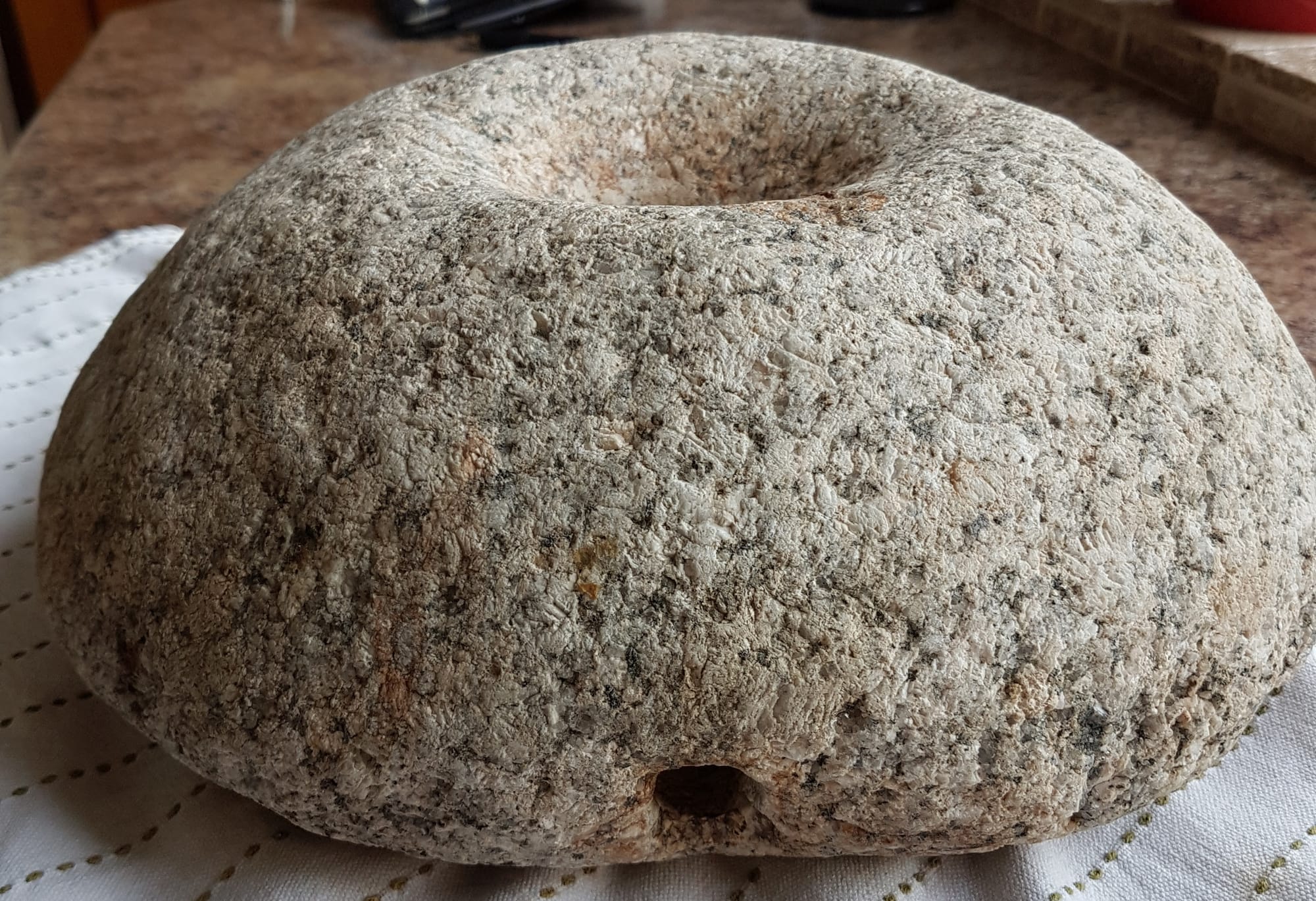
Milling by hand was hard work – as you'll discover when you give it at try! Making a few pounds of flour could take an hour or more. Often two people worked together on a quern together (usually women).
The beginning of the end
Watermills were introduced in Roman Britain and the earliest recorded windmill was built in Yorkshire in 1185. Manorial records show that from then on, many peasants were forced to pay a toll to grind grain at the lord’s watermill. They were fined if they were caught using private querns.
The Industrial Revolution
By the 1700–1800s hand querns were becoming rare, as ever more powerful mills made home grinding almost obsolete. The 18th-century woodcut below shows that by then querns had become a tourist attraction - it was published in Thomas Pennant's "A Tour in Scotland." In 1898, Bennett and Elton wrote that the quern "virtually only exists as a relic of antiquity in the cabinets of the curious".
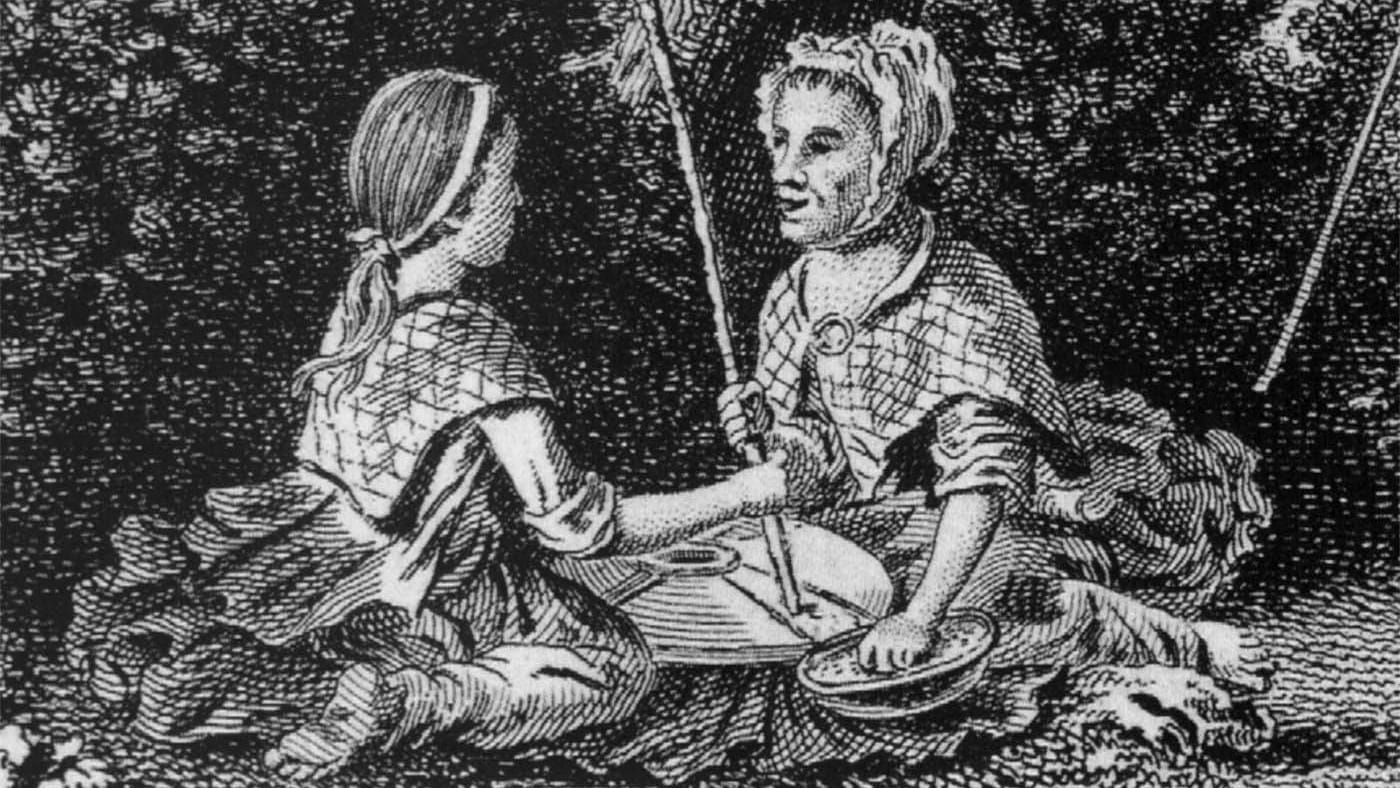
Querns in Britain today
Today quern stones survive mainly in museums and heritage sites. A preserved quern is part of the exhibit at many old mills (including ours) to show visitors how grain was once milled at home.
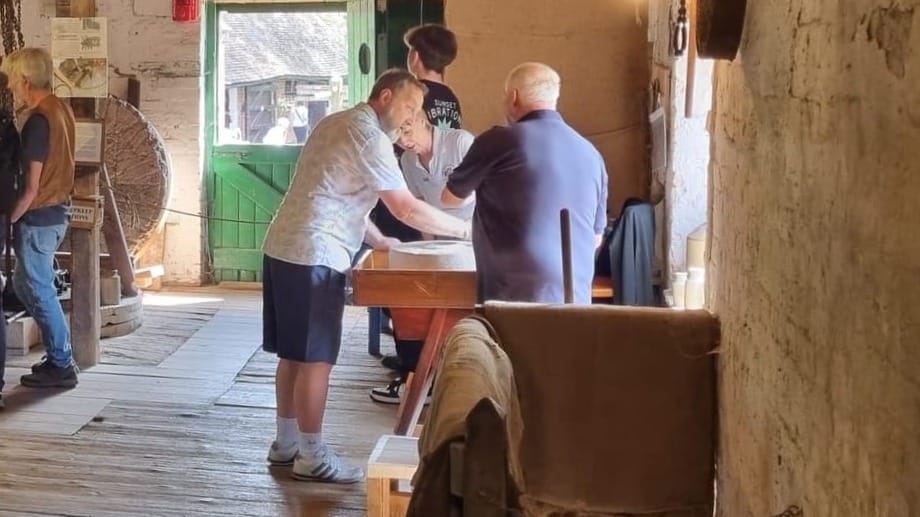
Where did our quern come from?
We are currently rooting through our archives to discover when we acquired the quern. We believe Tim Booth, a former Friend, may have arranged for it to be purchased and imported from India, but this is yet to be confirmed. The stand it sits upon was constructed by another Friend of the Mill.
